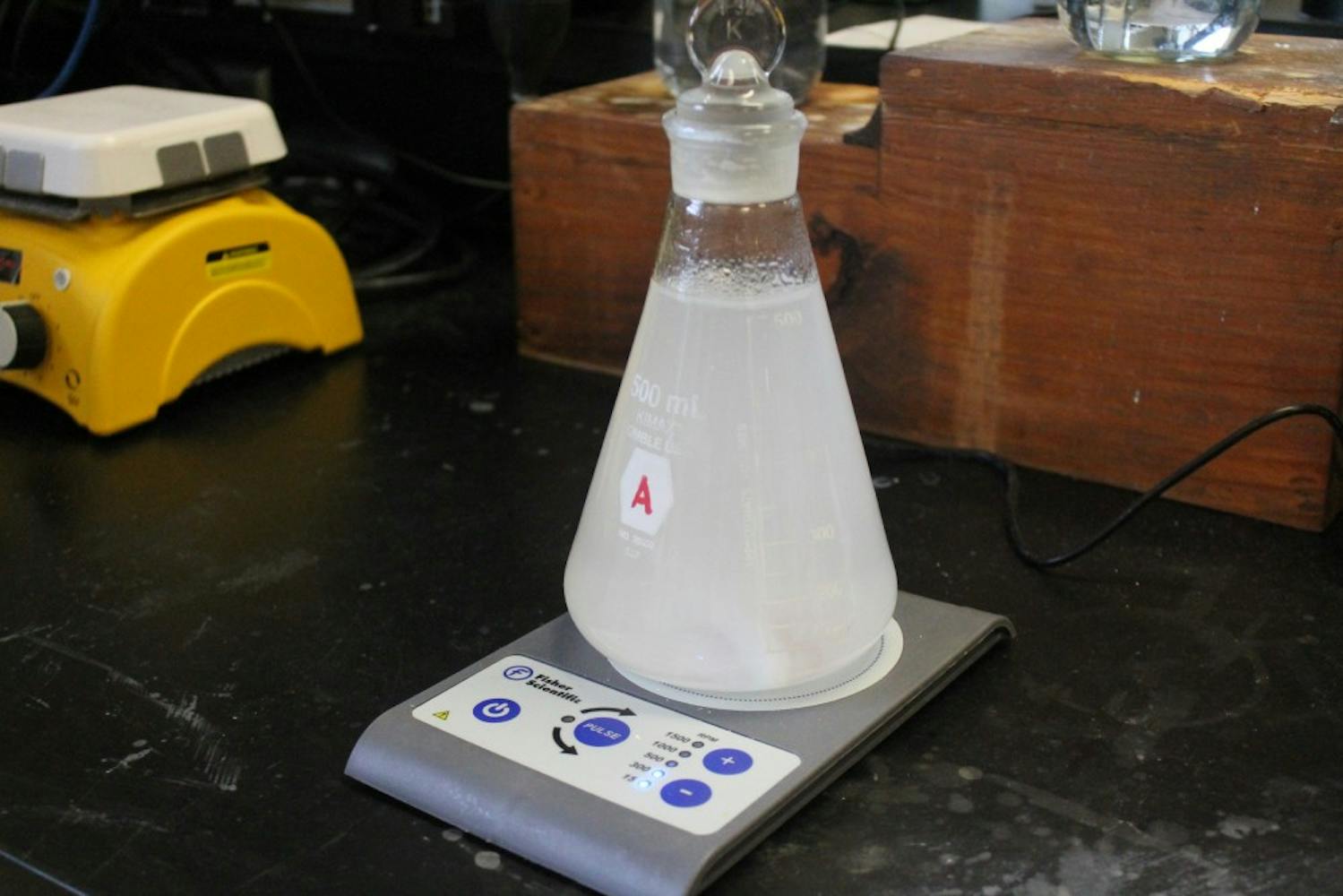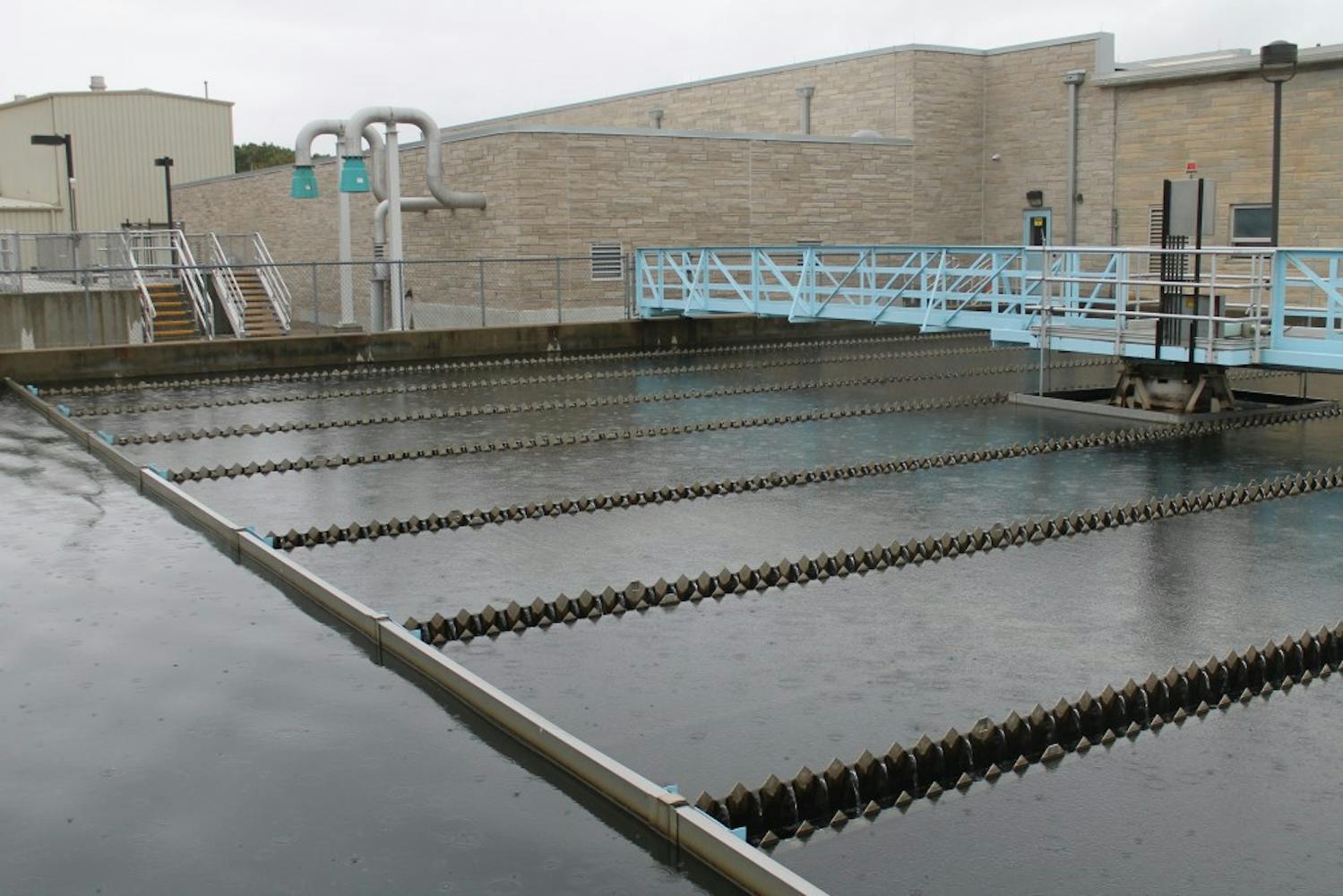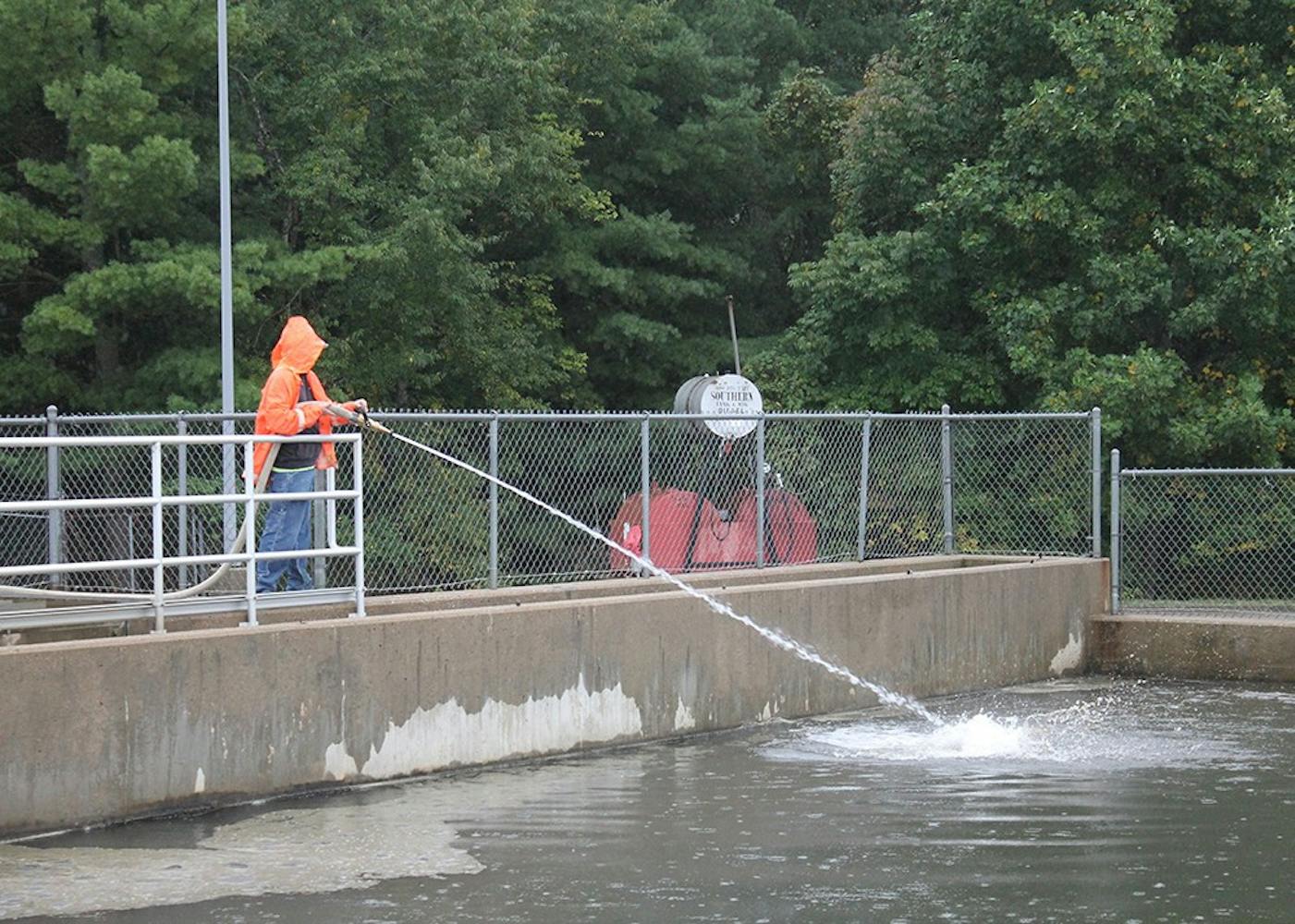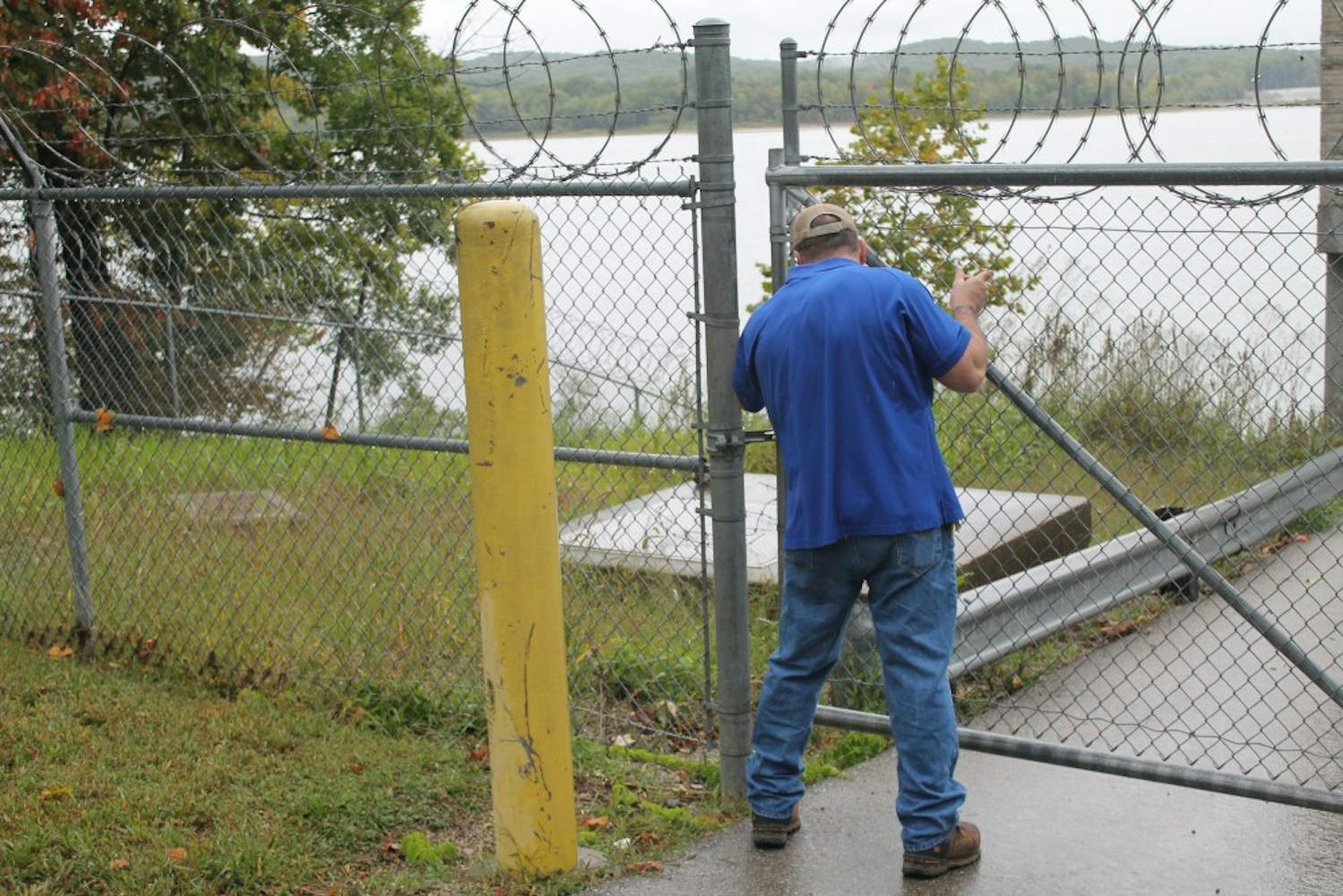Everyone put on earplugs as they prepared to walk in.
“It will be loud in here,” Vic Kelson, director of utilities with the City of Bloomington, said as he shoves the squishy plugs in his ears and walks into the whirring machine room.
The Monroe Water Treatment Plant begins its water filter system at the water intake building, which sits right at the shoreline of Monroe Reservoir, filtering out lake water for bugs, sticks and other microorganisms.
Kelson said the water comes in from the lake and pumps up the hill to the plant. The treatment process is designed to take out materials which float in the water.
Plant superintendent Don Gramlich said the water is tested on the hour, every hour with at least two of the eight operators on shift at a time.
“Twelve-hour shifts, seven days a week, 365 days a year,” Granlich said. “We never shut down.”
Which is true. The plant has been pumping along for 50 years, since it first opened in 1967.
In celebration of the plant’s birthday, there is an event Saturday to educate the community on where its water comes from, how to conserve it and how to protect its quality.
The treatment plant will celebrate its 50th birthday at the Bloomington Community Farmers' Market, with demonstrations, speakers, games and science experiments. It will go from 9 a.m. to 1 p.m.
Kelson, a professional engineer, was appointed as the utilities director 18 months ago, when Mayor John Hamilton and the board of utilities approved him.
The plant recently received a new motor for $400,000, paid for by the utilities department. Though it is a city department, most of its funding comes from ratepayers, Kelson said. No tax dollars go into the typical funding of the plant.
The facilities were expanded in 2012 in order to keep up with the growing demand of the local population, as well as the IU student population. The plant raised its capacity to 30 million gallons of water per day.
Granlich said the water moves up the hill from the intake building to the plant in about three and a half minutes.
Then, the real waterslide begins.
Kelson said they treat the water using a variety of techniques, including coagulation, changing a liquid to a solid or semi-solid state, to weed out the particles in the water that are not suitable for drinking. The particles all clump together into bits of sludge-like material floating on top of the discharge area of the water basin, which runs 17 feet deep.
A blade spins around and shoves the sludge and solids down into the bottom where they get pumped away. Little streams of water push through a wall toward the filters inside.
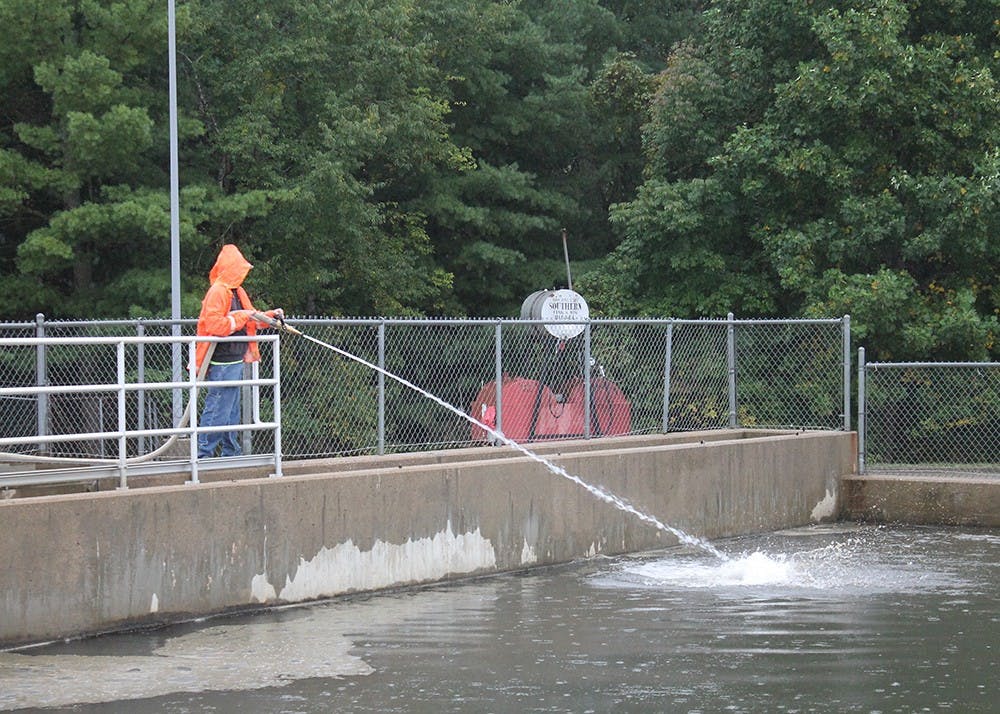
“Once we’ve done this, we’ve got now most of the solids out of the water,” Kelson said. “We’ve disinfected it a little bit, but not completely yet, and then what’s gonna happen now is the water will flow out of these basins into the trough and on over to our filters.”
Kelson said they are ready for a possible expansion if the need arises in the future. They don't leave anything to chance and set space aside for possible expansion in the future.
“If we want to do anything, we go to the board and then the city council, get a water rating, pay for expansion, have it approved by the state of Indiana,” Kelson said. “It’s good to be ready, just in case.”
Federal guidelines require the state to issue Source Water Assessments to identify significant or possible sources of contamination, the 2017 Water Quality Report of Bloomington report said.
The report explains where the water is coming from and cautions of possible contaminants present in the source water, including pesticides and herbicides from storm water runoff, radioactive contaminants from oil, gas and mining activities.
The EPA’s highest level of lead allowed in source water for a water treatment plant is 15 ppb or parts per billion.
The highest level detected in Monroe’s treatment plant is 5.8 ppb, in the 90th percentile, according to the report.
Kelson said the main priorities are keeping on top of the water quality with round-the-clock sampling and making sure the treatment process is being tracked. He laughed at the thought of it being closed down on holidays.
“You wouldn’t want your toilet to stop flushing on Christmas Eve, would you?” Kelson said.

